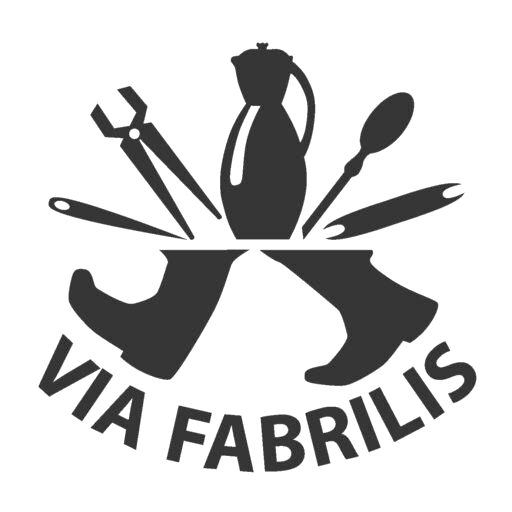Via Fabrilis route
The Via Fabrilis route, connecting places related to a range of crafts, was built in stages as part of the implementation of successive cross-border projects. With the passage of time, more members joined the trail – now it includes 38 institutions in 33 towns and settlements. The overriding goal of this project was to protect the cultural heritage of the Polish-Czech borderland, with particular emphasis on old, sometimes forgotten crafts.
Originally, the route ran from north to south, from Bolesławiec in Poland to Vrchlabi in the Czech Republic, connecting 15 institutions. It was created in 2008-2010 as part of the project entitled “Via Fabrilis – the route of craft traditions”, implemented by the Museum of Ceramics in Bolesławiec and the Museum of the Karkonosze National Park in Vrchlabí. On the Polish side, the route led through Szklarska Poręba – an old centre of glassmaking, Jelenia Góra, Wleń and Lubomierz – weaving centres – and Lwówek Śląski – a centre of brewing, as well as gold and mineral mining.
The cross-border trail was extended in 2013-2014 as part of another project – “Via Fabrilis – the route of craft traditions II”. This time it was led through 21 towns, connecting 26 institutions on the Polish and Czech sides of the Karkonosze and Jizera Mountains. On the Polish side, the route included: the world-famous Bolesławiec centre of ceramics production (Museum of Ceramics, Zakłady Ceramiczne “Bolesławiec”), Tomaszów Bolesławiecki (Glasstudio Borowski), Lwówek Śląski with its brewing traditions (Placówka Historyczno-Muzealna), weaving centres: Wleń (Centre of Culture, Sports and Tourism) and Lubomierz (Museum of Kargul and Pawlak), glassmaking centres in the mountains: Jelenia Góra (Museum of the Karkonosze Mountains), Piechowice (Huta Julia), Szklarska Poręba (Leśna Huta, Karkonosze Centre for Ecological Education), Kowary (House of Tradition) ) and Karpacz (Museum of Sports and Tourism), as well as cities located further to the west: Lubań (Regional Museum) associated with the textile industry and tinsmithing, and Zgorzelec – a city of pottery and textile traditions (Lusatian Museum).
The Czech part of the route covered Vrchlabí and Jilemnice (Museums of the Karkonosze National Park), towns known for the production of glass beads and the production of ornaments: Poniklá (Museum of Karkonosze Crafts, Rautis company), Paseky nad Jizerou (Museum of Patriots from the Frontier) and Vysoké nad Jizerou (Regional Museum), as well as Harrachov (Novas & Son Glassworks, Šindelka Exhibition). The new centres include: Horní Maršov (DOTEK Ecocentre), Františkov (Private Museum of the Brož Family) and Voletiny (Museum of Weaving in the House under the Ash).
As a result of the project “Hradek nad Nisou and Bolesławiec on the route of old crafts”, the half-timbered house Koník in Hradek nad Nisou was included in the trail in 2017-2018. The house is one of the rare examples of architecture characteristic for the region of Upper Lusatia and northern Bohemia.
The last stage of the trail extension took place in 2019-2022 as part of the “Centres of old crafts on the Via Fabrilis route” project. At that time, it was extended to include the following institutions: on the Polish side – the Museum of Papermaking in Duszniki Zdrój, the Regional Museum in Chojnów, the Museum of Household Appliances in Ziębice, the Regional Museum in Kłodzko, the Fillumeny Museum in Bystrzyca Kłodzka, PPH Vitbis sp z o.o. in Złotoryja and the Trail of Disappearing Trades in Kudowa Zdrój; on the Czech side – the Municipal Museum of Nové Město nad Metují, the Town Museum in Jaroměř, the City Museum in Dvoř Králové nad Labem and the Regional Museum of Náchod.

